Hygiene plays a very important role in the design of machines and equipment for the food industry, the animal feed industry or the pharmaceutical industry.
This article discusses the following important aspects of hygienic design:
- The necessity of hygienic design
- Schedule of requirements and wishes versus hygiene requirements
- The use of various construction materials in hygienic design
- Stainless steel (SS)
- Plastics
- Elastomers
- Hygienic construction
- Design criteria
The experts at Dinnissen Process Technology are available to answer all your questions:
Get in touch with Juul Jenneskens 077 467 3555
The need for hygienic design
An important aspect in the design of machines and equipment is hygiene. This applies especially to machines that are used in companies that produce food or animal feed and for the pharmaceutical industry. The hygienic design of a machine aims to prevent contamination from occurring in the products to be manufactured or processed, especially contamination by bacteria and viruses. This is called microbial contamination. Machines and equipment that are used in the above-mentioned sectors must be designed and produced in such a way that microbial contamination of the produced items is prevented.
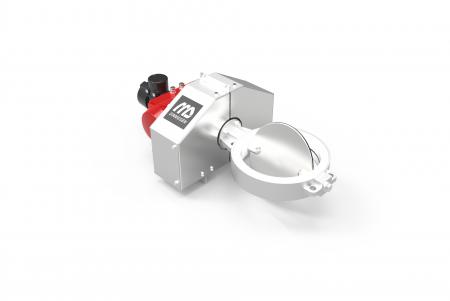
Hygienic design
Schedule of requirements and wishes versus hygiene
The starting point for the design of machines is the schedule of requirements. This program is a combination of the functional requirements, wishes and the hygiene requirements. The functional requirements are aimed at the purpose for which the machine is designed. The hygiene requirements are not an end in themselves. These are necessary and legally required preconditions. In the design phase, it can happen that the functional requirements and wishes conflict with the hygiene requirements. The designer must come to an acceptable compromise between these divergent interests. The most important requirement is that food safety is not compromised.
It is very important that hygiene requirements are included from the start of the design process. If, due to hygiene requirements, adjustments in the design or prototype have to be made afterwards, this can lead to disproportionate efforts and costs.
A hygienic design generally extends the life of the appliance, reduces production costs, and reduces maintenance.
The product sensitivity to microbial activity is an important factor for the demands placed on a machine to be developed. Microbial activity occurs less quickly with dry products than with moist products.
Hygiene requirements will be determined by the users of the products. The requirements will be stricter for products from vulnerable, sick persons than for products for very healthy athletes. It is important that the designer starts from the correct guidelines and is sufficiently informed about this.
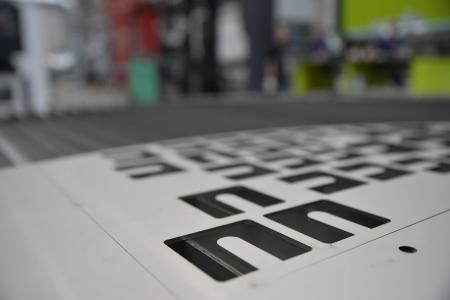
Ground food-grade plate
Construction materials
The machines and equipment that are made for the food and feed industry must meet the following standards with regard to hygiene requirements:
- Food processing machinery - Basic concepts - Part 2: Hygiene requirement.
- Safety of machinery - Hygiene requirement for the design of machinery.
The highest demands are placed on the materials that come into contact with the product. They must not be affected by the product during normal use and the cleaning and disinfection agents must not affect the construction material.
If cleaning is done in a prescribed manner, the surfaces that come into contact with the products must not be damaged.
The construction material must not contain any toxic substances, especially not in the places that can come into contact with the products.
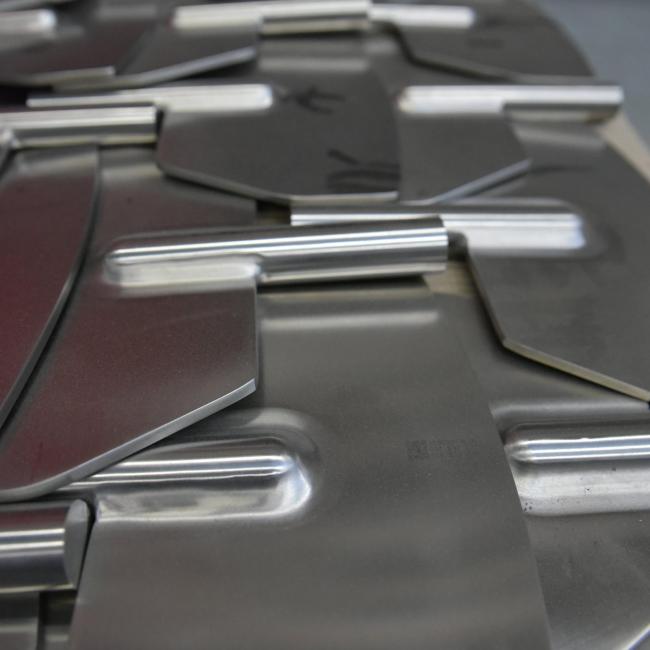
Stainless steel
Use of steel as construction material
In general, machines for the food processing industry are made of stainless steel (SS). Stainless steel prevents corrosion and is often a good solution for the requirements formulated above. Nowadays, plastics are increasingly used in compliance with the guidelines. The use of plastics offers certain advantages: extra options, better construction solutions, lower weight, better resistance to cleaning agents and chemicals and sometimes a lower price.
The materials must meet the following requirements:
- good resistance to normal atmospheric corrosion,
- good deployability in the following environmental conditions,
- solutions with a pH between 6.5 and 8
- low chlorine content (max. 50 mg / l)
- temperature is lower than 25 oC.
If these conditions are met, one of the austenitic stainless steel grades AISI-304 or AISI-304L is a good choice. The difference between AISI-304 and AISI-304L is that the latter is easier to weld. An austenite is a structure of steel in which the atoms are stacked in a cubic plane centered atomic lattice. AISI-304 contains 18% chromium and 10% nickel; AISI-304L contains more chromium and nickel and less carbon and is therefore more weldable.
If during use of the machine a maximum 2 x higher chlorine content occurs in certain places and the temperature rises to 50 oC, AISI-316 or AISI-316L is often used. These steels are more resistant to crack and pitting corrosion. AISI-316 is created by adding molybdenum to AISI-304; AISI-316L contains less carbon and is therefore more weldable.
If the temperatures in the machine rise even higher (up to 150 oC), then AISI-410, AISI-409, AISI-329 or Incoly 825 are suitable materials. The price of these steel types is higher.
Use of plastics as construction material
The use of plastics in the construction of machines for the food industry offers a number of advantages over the use of stainless steel. Naturally, the legal requirements must be met and, if possible, the recommendations associated with them. This concerns in particular:
- Commission Directive 2002 relating to plastic materials and articles intended to come into contact with foodstuffs.
- Code of Federal Regulations, Title 21, Part 170-199, Food and Drugs Administration.
It must also be checked that the plastic meets the following criteria:
Resistant to:
- foods and ingredients
- cleaning agents and disinfectants
- too high or too low temperature
- tension cracks
- leaching
- water repellent,
- No adsorption (adhesion of a layer of molecules to the surface),
- No desorption (the release of substances from the surface),
- Mechanical properties,
- Hardness
- Resilience
- Wear resistance
- Good workability.
Frequently used plastics are:
- POM: Polyoxymethylene Acetal Polymer or Polyacetal
- PTFE: Polytetrafluoroethylene (better known by the brand name Teflon)
- PP: Polypropylene
- PVC: Polyvinyl Chloride
Not all PTFE plastics are suitable, because some PTFE types are porous and difficult to clean. Some modified types of PTFE and fully fluorinated copolymers such as PFA (Perfluoroalkoxy resin) do meet the requirements.
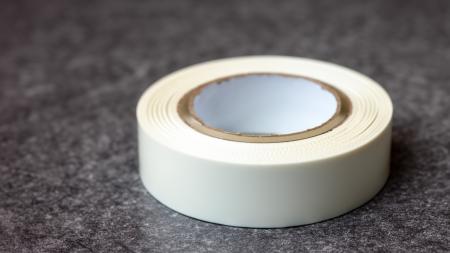
PTFE
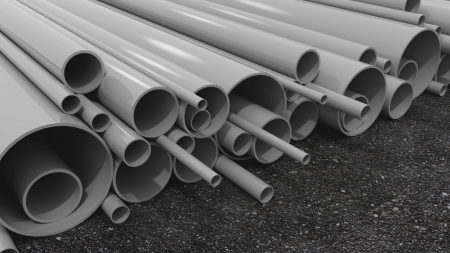
PVC
The starting point for the design of machines is the schedule of requirements. This program is a combination of the functional requirements and wishes and the hygiene requirements
Hygienic construction
The main goal of the designer of a machine or a device is to ensure that the machine meets the functional requirements. The set objectives are achieved by meeting the functional requirements. The design must meet the necessary and legally required preconditions with regard to hygiene. No microbiological problems should arise, especially when the machine is in operation.
From a hygienic point of view, the designer must pay attention to the following matters:
- Cleanability and disinfection: the machine must be easy to clean as easy as possible.
- Preventing the entry of micro-organisms into products: the machine must be impermeable to micro-organisms.
- Preventing the growth of microorganisms: Especially blind spots, crevices and openings must be avoided.
- Coordination of hygienic requirements with functional requirements: hygiene requirements sometimes clash with functional requirements and compromises have to be made. These trade-offs almost always mean that it becomes more difficult to clean and disinfect the machine or device. Such trade-offs must be well documented and discussed with the user.
- Validating whether the hygiene requirements have actually been met: it is very important to check whether the hygiene requirements are actually being met. If this is not the case, the required hygiene level can sometimes be achieved with relatively simple adjustments. If any doubts remain, it is possible to make testing or inspecting the machine part of the regular maintenance procedures.
Design criteria
The following basic criteria are part of hygienic design:
- No imperfections in product surfaces,
- No non-welded direct metal-to-metal connections
- Good alignment of pipes and equipment. No imperfections.
- No O-rings coming into contact with the product. If this is nevertheless necessary, provide a flat, static seal.
- No direct product contact with threads.
- Avoid sharp corners (<90o). Radius of the corners between a minimum of 3 mm and a maximum of 6 mm.
- No sharp edges due to deburring
- Smooth surface finish and acceptable surface roughness,
- Product surfaces must have an acceptable surface roughness Ra. The maximum roughness for large contact surfaces is 0.8 μm,
- Avoid horizontal surfaces, both inside and outside the equipment, including the pipework,
- Liquids must be able to flow freely, always to one side,
- Prevent condensation on equipment and pipes. If this is not possible, condensation must be able to drain,
- Ensure good, smooth weld seams, also for surfaces that do not come into contact with the product. If this is not met, post-processing is necessary. This can be done by grinding or polishing the material,
- It must not be possible for water or dirt to remain on supports (for example in front of the pipes),
- If pipework or components need to be insulated, this can be done with a completely sealed stainless steel jacket. This mantle makes it impossible for air and / or moisture to penetrate. With double-walled pipes, insulation can take place by vacuuming the space between the walls.
Ultimately, all surfaces that come into contact with the product should be easy to clean by hand and easy to inspect visually. If this is not possible, it must be demonstrated how all contaminants can be removed.

Name: Juul Jenneskens
Advisor
Please feel free to contact me if you have any questions about this subject. My team of colleagues and I are ready to answer!
Get in touch with Juul Jenneskens 077 467 3555 [email protected]
Do you prefer to request a consultation directly?
